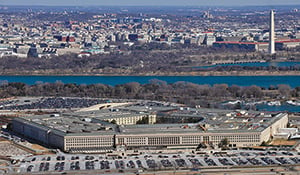
 Army force structure is under attack from multiple directions. Army leadership is struggling to keep active end strength from going below 490k and there are some proponents who advocate for numbers under 400k!
Army force structure is under attack from multiple directions. Army leadership is struggling to keep active end strength from going below 490k and there are some proponents who advocate for numbers under 400k!
The Army and Army Aviation wisely embarked on a plan to get out in front of the budget hackers who believe that salami slicing a warfighting force is prudent means for achieving monetary targets.
The Aviation Restructure Initiative was created in response to this threat; had it not, the outcome for the Army Aviation Enterprise could have been far worse.
Now the latest indignity to occur: the disestablishment of the aviation staff office in the Army G3/5/7, better known as DAMO-AV. This decision came about as a result of SECARMY and CSA Focus Area Review Groups that were chartered to provide recommendations on how to reduce and consolidate positions and functions within the Army Staff. In the case of DAMO-AV, it was determined that their functions were not vital and recommended elimination of the entire 24 person staff section. All the positions would be recoded and dispersed amongst other HQDA staff sections with only 3 persons identified to perform current DAMO-AV functions.
In terms of numbers of aircraft, Army Aviation is larger than the U.S. Air Force, and larger than the combined air forces of Russia, China and India. In comparison to our sister services the disparity is striking: the Navy has a staff directorate headed by an O-8 with 135 persons, the Marines with an O-9 and 167 persons, and the Air Force with an O-8 and 105 persons.
Army Aviation represents the largest training and equipping portfolio in the Army and is approximately 22% of the Army’s training and equipping budget. In times of constrained resources, similar to the 1990s, the most critical internecine battles both within and amongst the services usually centered on money. Could it be that the long knives are once again being sharpened to diminish the resourcing of Aviation in order to fund and sustain other aspects of the Army? In other words, is Army Aviation, a large resource target, about to be used as a bill-payer for those initiatives that otherwise would go unresourced?
I recall a former Multi-National Force-Iraq commander and former Army Chief of Staff stating that commanders (in both Iraq and Afghanistan) would not depart a forward operating base without Army Aviation. It was, and continues today, to be the most sought after branch in the Army. But be that as it may, here we are about to take out three combat aviation brigades and a key functional staff element at the Department of the Army level.
DAMO-AV was created to synchronize complex aviation issues and has been immensely successful in completing their mission. The Aviation Transformation Task Force, in 2003, deemed that section so important, that it was coded to be led by a 2-star general officer. Today a colonel, working two levels above his grade, admirably accomplishes the myriad staff actions that flow thru his office and quietly and professionally supports Army Aviation to ensure it’s trained and ready. And soon, if nothing changes, it will cease to exist. Just like the Caribou, the Comanche, and the C27-J, it will be a memory left only to Army historians to preserve.
BG Howard W. Yellen, Ret.
31st President, AAAA
This email address is being protected from spambots. You need JavaScript enabled to view it.
Caption: The Pentagon Credit: DEPARTMENT OF DEFENSE PHOTO BY SENIOR AIRMAN PERRY ASTON










